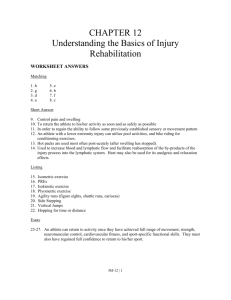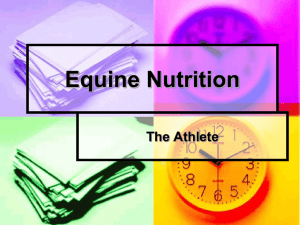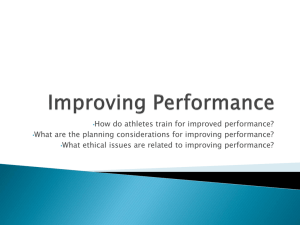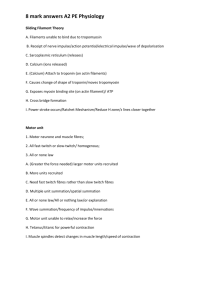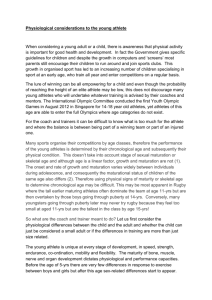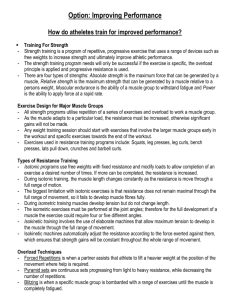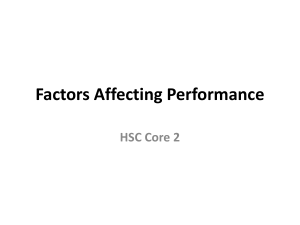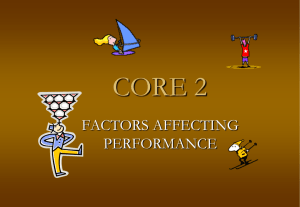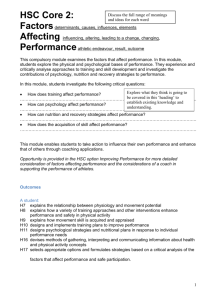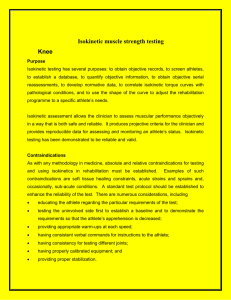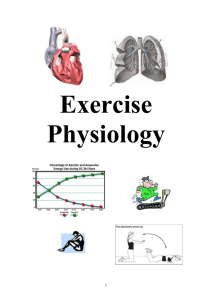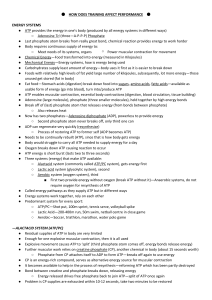HSC Glossary - Kotara High School
advertisement
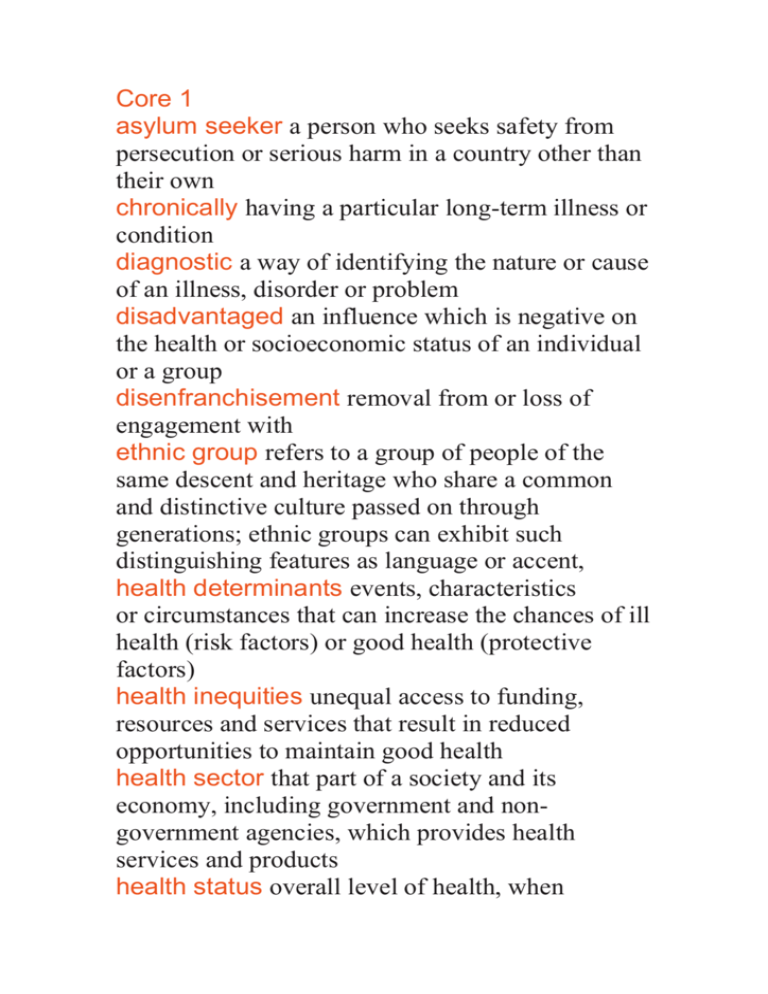
Core 1 asylum seeker a person who seeks safety from persecution or serious harm in a country other than their own chronically having a particular long-term illness or condition diagnostic a way of identifying the nature or cause of an illness, disorder or problem disadvantaged an influence which is negative on the health or socioeconomic status of an individual or a group disenfranchisement removal from or loss of engagement with ethnic group refers to a group of people of the same descent and heritage who share a common and distinctive culture passed on through generations; ethnic groups can exhibit such distinguishing features as language or accent, health determinants events, characteristics or circumstances that can increase the chances of ill health (risk factors) or good health (protective factors) health inequities unequal access to funding, resources and services that result in reduced opportunities to maintain good health health sector that part of a society and its economy, including government and nongovernment agencies, which provides health services and products health status overall level of health, when disability, health determinants, life expectancy and other influences are considered heredity the transfer from one generation to the next of a set of genetic characteristics holistic a view of health that includes many dimensions, social determinants and diverse understandings intersectoral characterised by cooperation between people from different agencies, industries and levels of government life expectancy predicted years of life remaining at a given time or age marginalised to take or keep somebody or something away from the centre of attention, influence, or power mass media any form of communication, such as the press, television, radio and motion pictures which reaches large numbers of people median the middle number in a group of numbers meditation a relaxation method used to calm people down migrant someone who chooses to leave their own home to live in another country mortality rates number of deaths (usually presented per 100 000 population) multiculturalism a term that describes the cultural and linguistic diversity of a society neoplasm a tumour or tissue containing a growth osteoarthritis a common form of arthritis that typically affects the spine, hips, knees and hands osteoporosis the thinning of bone tissue and loss of bone density palliative alleviating pain and symptoms without eliminating the cause premiums the sum of money paid, usually at regular intervals, for an insurance policy quality of life an intangible measure of the extent to which individuals feel well and fulfilled by their lives; it includes both physical and psychological aspects racism prejudice or animosity against people who belong to other races social capital a resource produced when people participate in health-promoting activities at a community or individual level sociocultural relating to or involving cultural and social factors Core 2 adenosine triphosphate compound used for energy in muscle contractions aerobic any reaction occurring in the presence of oxygen aerobic training threshold point at which the body starts to achieve a training effect; approximately 60% of maximum heart rate alactacid system an anaerobic energy system using creatine phosphate as a fuel to resynthesise ATP anabolic steroids drugs which increase muscle strength by encouraging new muscle growth; enables an athlete to train harder and longer at any given period anaerobic any reaction occurring without oxygen being present anaerobic metabolism breakdown of a substance in the absence of oxygen anaerobic threshold point at which the body starts to produce lactic acid quickly; approximately 80% of maximum heart rate anxiety a state that manifests itself in response to a given stimulus or situation which may be perceived as being threatening arousal a physical and mental state of being alert or aware of surrounding situations before or after an event ballistic stretching forcing a muscle by stretching past the stretch reflex biomechanical analysis provides valuable information for analysing an athlete’s technique and performance results, and for the prevention of injuries carbohydrate loading a strategy involving changes to training and nutrition that can maximise muscle glycogen (carbohydrate) stores prior to endurance competition cardiac output the amount of blood pumped out of the heart per minute creatine phosphate fuel used to resynthesise ATP molecules in the ATP/PC system cognitive relating to the brain and the ability to learn centring focusing attention in one spot character the way a person feels, thinks and acts that promotes moral strength, firmness self-control and integrity free fatty acids fat used by the body to produce numerous ATP molecules glucose a simple sugar which is a form of carbohydrate glycaemic index a scale used by dietitians to gain a better understanding of the types of carbohydrates athletes were ingesting and how quickly they were digested glycerol a compound used by the liver to produce glycogen for cellular contraction glycogen glucose that is broken down and stored in the liver and muscle glycogen sparing the preference of the body to break down fats before the carbohydrates are depleted glycolysis process of converting glucose to pyruvic acid haemoglobin the level of oxygen carrying component of blood in the body kinaesthetic sense the system of the body using the senses to give feedback to the athlete about position and performance lactic acid the by-product given off after glycogen is broken down in the lactic acid energy system lipolysis the process by which triglycerides are broken down into free fatty acids and glycerol lung capacity the volume of air the lungs can hold mental rehearsal a method involving images an athlete may form of skilled performance minerals essential component of the body also known as electrolytes and help in muscle contraction and nerve transmission mitochondria also known as the power house of the body; it is where the production of ATP occurs objective measures a measurement using measurable data, such as time or distance, as reference onset blood lactate accumulation (OBLA) the point at which lactic acid builds up in the blood stream faster than the body can dispose of it optimum arousal a point between performance and arousal where performance is the best oxygen debt the additional oxygen that must be taken into the body after vigorous exercise to restore all systems to their normal states personal judging criteria a personal opinion or idea a judge will use to appraise performance personality a set of ideas that influence a person’s behaviours or motivation prescribed judging criteria a set checklist or criteria distributed by a sports governing body that a judge will use to appraise performance progressive overload a situation where an individual works past their normal limits in small, increasing increments resting heart rate the heart rate of the body at rest resynthesise to rejoin together, such as ADP and free phosphate to make ATP reversibility the loss of training effects due to activity stopping short interval training enables the athlete to improve the workload by combining heavy bouts of fast running with recovery periods of slower jogging skill acquisition the learning of a particular skill and storage to memory for future use skill an athlete’s ability to choose and perform the right techniques at the right time, successfully, regularly and with a minimum of effort somatotype the body shape of a person specificity training training that involves reflection of an activity in terms of muscles and energy system used state anxiety an unpleasant emotional arousal in the face of threatening demands or dangers strength training overload manipulation of the number of repetitions, tempo, sets, force applied and exercise types stretch reflex a protective mechanism in the muscle to prevent injury while stretching a muscle stroke volume the amount of blood pumped out of the heart per beat subjective measures a measurement based on personal opinion trait anxiety anxiety that is general to all populations triglycerides a form of fat stored as adipose tissue which provides protection for the body visualisation seeing pictures in the mind of a performance that will be undertaken vitamins essential components of the body that help with converting food into usable forms of energy weight training a form of isotonic resistance training involving a manipulation of the number of repetitions, sets, tempo, exercise types and weight used to cause desired increases in strength, endurance, size, and shape Sports Medicine cryotherapy a form of cooling as a means of treating injuries, especially acute and chronic injuries hydrotherapy the use of hot or cold water to treat injuries modified rules modification to rules of a game in sports to reduce excessive physical demand placed on children from adult equipment and field sizes rehabilitation a process to restore to health by training and therapy, so that an athlete can return to play or activity as soon as is safely possible Improving Performance diuretics a masking agent that can be used to control weight or mask the use of other drugs doping also known as using ergogenic aids; the practice of using artificial substances or methods to enhance athletic performance drills specific activities that replicate the skills used in a sport335336 elastic resistance bands inexpensive and convenient resistance bands that can be used in limited spaces erythropoietin (EPO) stimulates the bone marrow stem cells to make red blood cells, which increase the delivery of oxygen to the kidney physical features, family names and customs human growth hormone (HGH) a hormone that is naturally produced by the body in the pituitary gland and stimulates the body’s synthesis of the proteins that form bone and muscle tissue, decreases body fat and increases testosterone levels hydraulic resistance gives a fixed amount of resistance throughout the entire exercise depending on the speed of the movement hypertrophy increase in size of muscle fibres infrastructure the basis or framework on which something is built lactate threshold testing an innovative method used to measure lactate levels during training to accurately determine heart rate training over-training a state of over-training or burnout caused by inappropriate stress loads in training programs on the athlete zones and recovery peaking a state of being in the absolute best condition, physically, emotionally and mentally at a specific time for an event or race performance measures specific measures used to evaluate a performance periodisation an annual training plan separated into three periods or phases: pre- season (preparatory), in-season (competition) and offseason (transition) pre-screening a process which provides information about an athlete’s history, capabilities and any pre-existing conditions small-sided games practices that focus on different aspects of team play through games, and apply skills learned to team situations supplementation an extra intake of a dietary substance which may be lacking in a diet eg vitamins, minerals or protein tapering a gradual reduction in an athlete’s workout demands in order to allow the body to recover from the stress ACRONYMS IRSD Index of Relative Socioeconomic Disadvantage; a scale used to describe different levels of social status NATSISS National Aboriginal and Torres Strait Islander Social Survey NHMRC National Health and Medical Research Council OECD Organisation for Economic Cooperation and Development; the collective name for a group of the world’s wealthiest nations who collect and share social data for the purpose of improving the lives of their populations
